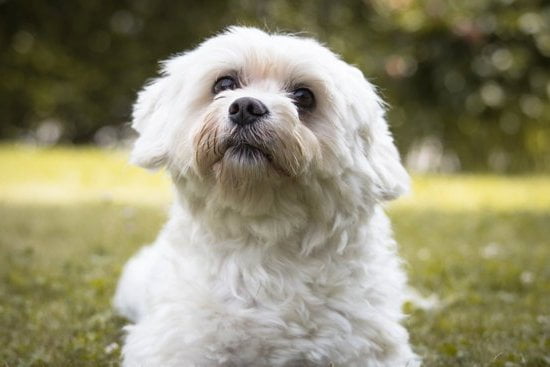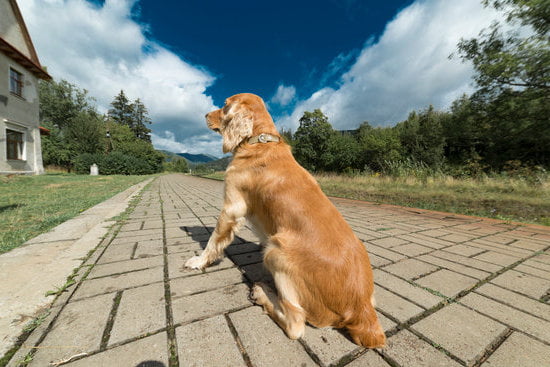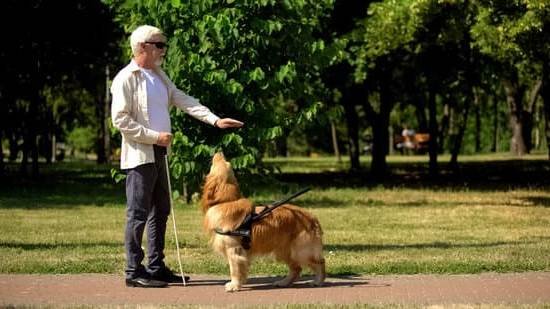Crate training an adult dog can be a beneficial and effective way to provide comfort, security, and structure for your furry companion. Whether you are welcoming a new adult dog into your home or looking to improve their behavior, crate training can be a valuable tool in fostering positive habits and reducing anxiety in your pet.
In this article, we will delve into the essential aspects of how to crate train an adult dog to help both you and your canine friend navigate this process successfully.
Choosing the right crate size and type for your adult dog is crucial in ensuring their comfort and safety during crate training. It is important to select a crate that allows your dog to stand up, turn around, and lie down comfortably.
Additionally, choosing between wire crates, plastic crates, or soft-sided crates will depend on your dog’s needs and preferences. The crate should also be a space where your adult dog can relax and feel secure rather than confined or restricted.
Introducing your adult dog to the crate may require patience and gentle guidance. By using positive reinforcement techniques such as treats, praise, or favorite toys, you can help create a positive association with the crate.
Gradually acclimating your dog to spending time in the crate for short periods while gradually increasing the duration can help them adjust and feel more at ease. With consistency, patience, and understanding of your dog’s individual needs, you can successfully make the crate a welcoming and comforting space for your adult companion.
Choosing the Right Crate Size and Type for Your Adult Dog
When it comes to crate training an adult dog, one of the most important aspects to consider is choosing the right crate size and type. The crate should be a comfortable and safe space for your dog, not only during training but also as a place they can retreat to when they need some alone time. The size of the crate is crucial – it should be big enough for your dog to stand up, turn around, and lie down comfortably.
There are different types of crates available in the market, including wire crates, plastic crates, soft-sided crates, and even wooden crates. Each type has its pros and cons, so it’s essential to choose one that suits your adult dog’s needs and preferences.
For instance, if you have a chewer or a strong escape artist, a sturdy wire crate might be the best option. On the other hand, if your dog prefers privacy and coziness, a plastic or soft-sided crate could be more suitable.
To determine the right size for your adult dog’s crate, measure them from their nose to their tail base while standing up straight, then add a few inches to each measurement for comfort. The crate should be big enough for them to stretch out fully without feeling cramped but not too large that it loses its den-like feel.
Keep in mind that puppies can eventually grow into larger crates; investing in an adjustable divider can help you accommodate their growth without having to purchase multiple crates along the way. By selecting the appropriate size and type of crate for your adult dog, you’re setting them up for success in their crate training journey.
Introducing Your Adult Dog to the Crate
Introducing your adult dog to crate training may seem like a daunting task, but with the right tips and techniques, it can be a smooth process. One important aspect is to make the crate appealing to your dog by placing their favorite toys, blankets, or treats inside.
This will help create a positive association with the crate from the beginning. Additionally, you can feed your dog in the crate or give them special treats only when they are inside to reinforce a positive connection.
Slowly introduce your dog to the crate by leaving the door open initially and allowing them to explore it at their own pace. Encourage them to go inside with treats or toys and praise them when they do so. Avoid forcing your dog into the crate as it may create negative associations with confinement. Patience is key during this process – remember that every dog adjusts at their own pace.
Another useful technique is to start with short periods of time in the crate and gradually increase it as your dog becomes more comfortable. Begin by closing the door for a few minutes while you are present, then gradually extend the time as your dog gets used to being inside.
Consistency is crucial in crate training an adult dog, so stick to a regular schedule and avoid using the crate as punishment. With patience, consistency, and positive reinforcement, you can successfully crate train your adult dog.
| Tip | Technique |
|---|---|
| Make Crate Appealing | Place favorite toys or treats inside |
| Start Slowly | Leave door open initially and allow exploration |
| Gradually Increase Time | Closing door for short periods and extending over time |
Making the Crate a Positive Space for Your Adult Dog
When crate training an adult dog, it is crucial to make the crate a positive and comfortable space for your furry friend. This will help eliminate any negative associations with the crate and encourage your dog to view it as a safe haven. Here are some tips and techniques on how to achieve this:
- Comfortable Bedding: Ensure that the crate contains soft bedding or blankets to make it cozy for your adult dog. This will make the crate more inviting and comfortable, encouraging your dog to spend time in it willingly.
- Favorite Toys and Treats: Place your dog’s favorite toys, chews, or treats inside the crate to create a positive association with the space. This can help keep your dog entertained and distracted while in the crate, making it a happier experience.
- Positive Reinforcement: Whenever your adult dog voluntarily goes into the crate, be sure to praise and reward them with treats or verbal encouragement. Positive reinforcement will help reinforce good behavior and make your dog more likely to choose the crate on their own.
Creating a positive space within the crate for your adult dog is essential in successful crate training. By implementing these tips and techniques, you can help your furry companion feel comfortable, secure, and happy when spending time in their crate. Remember that consistency and patience are key when establishing the crate as a positive environment for your adult dog.
Establishing a Crate Training Routine for Consistency
One effective way to establish a crate training routine is to gradually increase the time your adult dog spends in the crate. Start with short periods of time, such as 15-30 minutes, and gradually extend the time as your dog becomes more comfortable. Always make sure that your dog has recently been exercised and has had a potty break before going into the crate for longer periods.
Additionally, consistency in using verbal cues and commands can also help reinforce the routine. Use consistent phrases like “crate time” or “kennel up” when sending your dog into the crate, and reward them with treats or praise for going in without hesitation. By consistently following a schedule, using verbal cues, and gradually increasing crate time, you can effectively train an adult dog to see their crate as a safe and comfortable space.
| Establishing Crate Training Routine | Consistency in Training Approach |
|---|---|
| Create a schedule for when your dog will be in the crate | Use consistent verbal cues and commands |
| Gradually increase time spent in the crate | Reward with treats or praise for going in without hesitation |
Dealing With Common Challenges and Misconceptions in Crate Training Adult Dogs
Addressing Separation Anxiety
One common challenge that adult dogs may face during crate training is separation anxiety. This can manifest in behaviors such as excessive barking, whining, or destructive chewing when left alone in the crate.
To help your dog overcome separation anxiety, it’s essential to gradually increase the time they spend in the crate and make sure they associate positive experiences with being inside. Implementing a consistent routine and providing mental stimulation through toys or treats can also help alleviate separation anxiety during crate training.
Handling Resistance to Crate Training
Some adult dogs may initially resist being confined to a crate, especially if they haven’t been introduced to one before. If your dog shows signs of fear or anxiety towards the crate, it’s important not to force them inside but instead use positive reinforcement techniques to create a sense of security and comfort.
Start by leaving treats or favorite toys near the crate and gradually move them inside to encourage your dog to explore the space willingly. Patience and consistency are key in overcoming resistance to crate training in adult dogs.
Dispelling Misconceptions About Crate Training
There are several misconceptions surrounding crate training adult dogs, such as it being cruel or unnecessary. However, when done correctly, crate training can provide a safe and secure environment for your dog while assisting in behavior management and house training.
It’s important to understand that crates should never be used as punishment but rather as a positive tool for setting boundaries and establishing routines. By dispelling these misconceptions and educating yourself on the benefits of crate training, you can effectively guide your adult dog towards successful crate training.
Gradually Increasing Crate Time
When it comes to crate training an adult dog, one of the key factors in successfully acclimating them to their new environment is gradually increasing the amount of time they spend in the crate. This step-by-step guide will help you navigate this process smoothly and effectively, ensuring that your adult dog becomes comfortable and at ease in their crate.
Here are some tips on how to gradually increase crate time for your adult dog:
- Start slow: Begin by introducing your dog to the crate for short periods of time, such as 10-15 minutes at a time. Use treats and positive reinforcement to make the experience enjoyable for them.
- Gradually increase duration: As your dog becomes more comfortable with spending short periods in the crate, slowly extend the length of time they spend inside. Increase increments by 5-10 minutes each session.
- Monitor behavior: Pay close attention to your dog’s behavior while they are in the crate. Look for signs of stress or anxiety, such as excessive barking or whining. If these behaviors occur, take a step back and decrease the amount of time spent in the crate before trying again.
By following this step-by-step guide and taking a gradual approach to increasing crate time for your adult dog, you can help them adjust to their new routine and develop a positive association with their crate. Remember to be patient and consistent throughout this process, as every dog is unique and may require different timelines for successful crate training.
Monitoring Your Adult Dog’s Progress and Adjusting Crate Training Accordingly
Tracking Your Adult Dog’s Behavior
As you continue crate training your adult dog, it is essential to closely monitor their progress and behavior. Pay attention to how your dog reacts to being in the crate, whether they show signs of anxiety or distress, or if they are starting to feel more comfortable and relaxed. Keep a journal or log of their behavior to track any improvements or setbacks.
Adjusting the Crate Training Plan
Based on your observations of your adult dog’s behavior, be prepared to adjust your crate training plan accordingly. If you notice that your dog is becoming more anxious or agitated in the crate, consider taking a step back in the training process and providing more gradual exposure to being crated. On the other hand, if your dog is responding well and showing signs of progress, you can slowly increase the time they spend in the crate.
Seeking Professional Help
If you find that despite your best efforts, your adult dog is not making progress in crate training or is experiencing significant distress while crated, it may be beneficial to seek assistance from a professional dog trainer or behaviorist. They can provide personalized guidance and support on how to modify your training approach based on your specific dog’s needs and temperament. Remember that every dog is unique, so what works for one may not work for another.
Final Tips and Tricks for Successful Crate Training of Adult Dogs
In conclusion, crate training an adult dog can be a challenging but rewarding process. By understanding the importance of crate training and following the tips and techniques outlined in this article, you can successfully train your adult dog to see their crate as a safe and positive space. Remember that consistency is key when it comes to crate training, so establishing a routine and gradually increasing crate time are crucial steps in the process.
One final tip for successful crate training of adult dogs is to be patient and to adjust your approach based on your dog’s progress. Every dog is different, so it’s important to monitor how your dog responds to crate training and make any necessary adjustments along the way. Additionally, incorporating positive reinforcement techniques such as treats and praise can help create a positive association with the crate for your adult dog.
In summary, while crate training an adult dog may take time and effort, the benefits – including providing a safe space for your dog and potentially reducing separation anxiety – make it well worth the investment. By following the guidelines provided in this article on how to crate train an adult dog, you can set your furry friend up for success in learning to love their crate.
Frequently Asked Questions
Can You Crate Train a Full Grown Dog?
Yes, it is possible to crate train a full-grown dog. While it may take more patience and time compared to training a puppy, using positive reinforcement and making the crate a comfortable space can help the dog adjust.
Is It Ever Too Late to Crate Train a Dog?
It is never too late to crate train a dog, even if they are older. Dogs are adaptable animals and can learn new behaviors at any age. With consistency and patience, most dogs can learn to feel comfortable in their crate.
How Do I Get My Adult Dog to Sleep in His Crate?
To get your adult dog to sleep in his crate, start by making the crate a positive environment for him. You can place treats or toys inside, create a cozy bed, and associate the crate with positive experiences like meal times or quiet time.
Gradually increase the amount of time your dog spends in the crate while keeping it a pleasant experience for him. Patience and consistency are key when helping your adult dog sleep in his crate.

Welcome to the blog! I am a professional dog trainer and have been working with dogs for many years. In this blog, I will be discussing various topics related to dog training, including tips, tricks, and advice. I hope you find this information helpful and informative. Thanks for reading!





